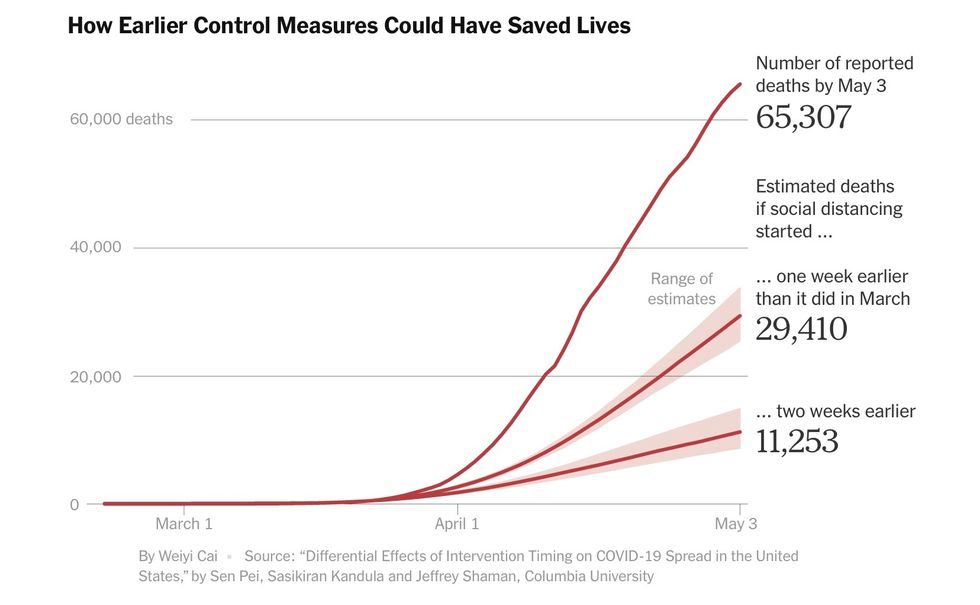Modelers find that tens of thousands of U.S. deaths could have been prevented.
If the United States had begun imposing social-distancing measures one week earlier in March, about 36,000 fewer people would have died in the pandemic, according to new estimates from Columbia University disease modelers.
And if the country had begun locking down cities and limiting social contact on March 1, two weeks earlier than when most people started staying home, a vast majority of the nation's deaths — about 83 percent — would have been avoided, the researchers estimated.
The enormous cost of waiting to take action reflects the unforgiving dynamics of the outbreak that swept through American cities in early March. Even small differences in timing would have prevented the worst exponential growth, which by April had subsumed New York City, New Orleans and other major cities, the researchers found.
"It's a big, big difference," said Jeffrey Shaman, an epidemiologist at Columbia and the leader of the research team. "That small moment in time, catching it in that growth phase, is incredibly critical in reducing the number of deaths."
The findings are based on infectious-disease modeling that gauges how reduced contact between people starting in mid-March slowed transmission of the virus.
On March 16, President Trump urged Americans to limit travel, avoid groups and stay home from school. Mayor Bill de Blasio of New York City closed schools on March 15, and Gov. Andrew M. Cuomo of New York issued a stay-at-home order that took effect on March 22.
But in cities like New York, where the virus arrived early and spread quickly, those actions were too late to avoid a calamity. Dr. Shaman's team modeled what would have happened if those same changes had taken place one or two weeks earlier and estimated the spread of infections and deaths until May 3.
The results show that as states reopen — all 50 states had eased restrictions somewhat as of Wednesday — outbreaks can easily get out of control unless officials closely monitor infections and immediately clamp down on new flare-ups.
And they show that each day that officials waited to impose restrictions in early March came at a great cost.
New York Times, May 20, 2020 updated May 21, 2020
###
May 21, 2020
Voices4America Post Script. Lockdown 1 week earlier would have saved 36,000 lives! 2 weeks earlier would have saved 83% of lives! History will call this #TrumpGenocide Learn this now. Pass this on! #RememberInNovember


